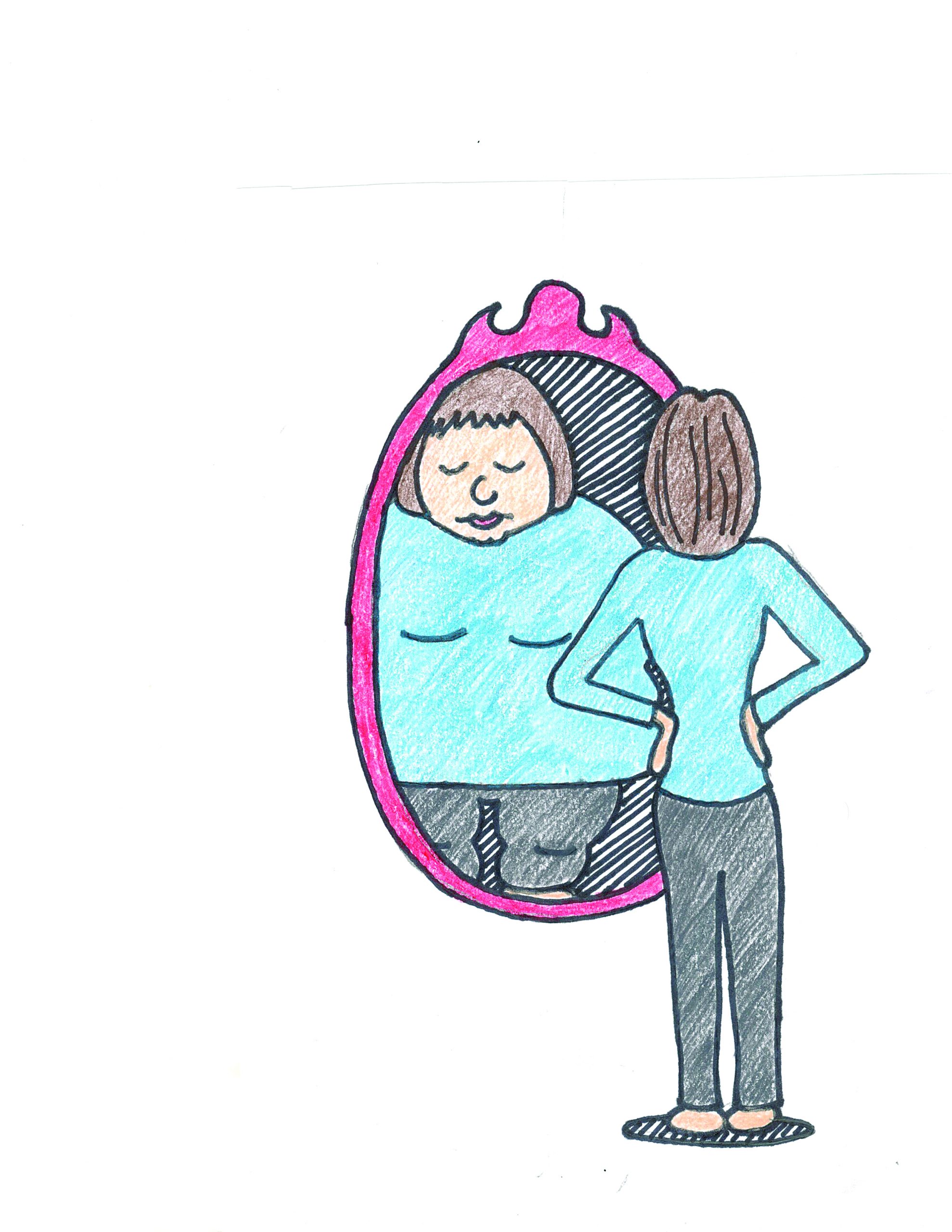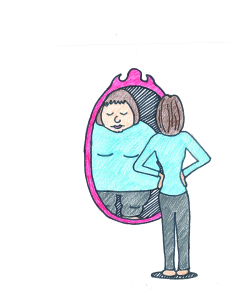

In middle school, where hormones run wild, bodies are changing and words become great swords and warhammers, I was a nerd and was bullied for it often.
French fries were comfort food and soon after turning to food as refuge from hurtful words, I started to gain weight. I didn’t notice my weight increase for a while since I’d always been a bit thin for my age. However, it soon got to the point where going jean shopping was a chore, not a fun treat.
I didn’t quite hate my figure. But looking in the mirror, my heart would sink as I tried on clothes after clothes, only to find nothing in the kids section that fit right. I’d gaze at myself, trying to see past the outside, desperate to find that supposed ‘beautiful self’ that all the counselors lectured about.
By the middle school years, over 60 percent of girls are dissatisfied with the way their body looks and between ages 12-15, body satisfaction levels hit rock bottom, leaving you in an abyss of disgust for your figure which doesn’t pick up until age 20.
For a good three years, all I could see was the outer image that didn’t fit in with what television and magazines were telling me to look like. I had braces, my skin wasn’t Pro-Active clear and I had all the wrong curves in all the wrong places.
Every way I turned, I was bombarded with beautiful images of Gwen Stefani’s perfectly flat stomach, skinny models showing off the fall fashions any healthy figured girl could never fit into, and Vanessa Hudgens’ perfect “bikini bod” as Seventeen Magazine called it.
I was fortunate — writing was my refuge and I wrote in every spare moment, bringing my pain to the page, allowing myself to vent, dispersing the pain and low self-esteem with each word. However, not all women are lucky to have a venue that helps them cope, and instead they may turn to eating disorders in an effort to change themselves.
At least 8 million people in America have an eating disorder, and 90 percent of those people are women. A prime cause of eating disorders can be traced back to the media, since more than 80 percent of movies mention a woman’s figure. Every year the average person sees over 5,000 advertisements mentioning attractiveness.
This means that each day, you see over 13 commercials telling you how you’re supposed to look, dress and act. Combine that with peer pressure from classmates (mine actually urged me towards bulimia as a solution to my curvy figure) and you have a thriving environment for self-doubt.
In high school, I joined swim team which helped not only with my figure, but with my overall health. I wasn’t the fastest swimmer by far, but I always felt refreshed after practice.
I expanded my writing by joining the literary magazine, and I learned how to take a different form of critique. Soon, the issues about how I looked grew dim compared to the issues about how I wrote, and one day I looked into the mirror and realized I no longer felt ugly.
While the media still affects how I feel about myself to a degree, now that I am older and the messages are changing (look for that article in next week’s Signal), it is to a much lesser degree and I no longer look to it as a measure of my own standards.
Every woman is beautiful and incredible in her own way and the media should not affect that inner radiance that we all have no matter what your size or shape is.
Resources:
http://www.nyc.gov/html/girls/html/issues/issues.shtml
http://depts.washington.edu/thmedia/view.cgi?section=bodyimage&page;=fastfacts
